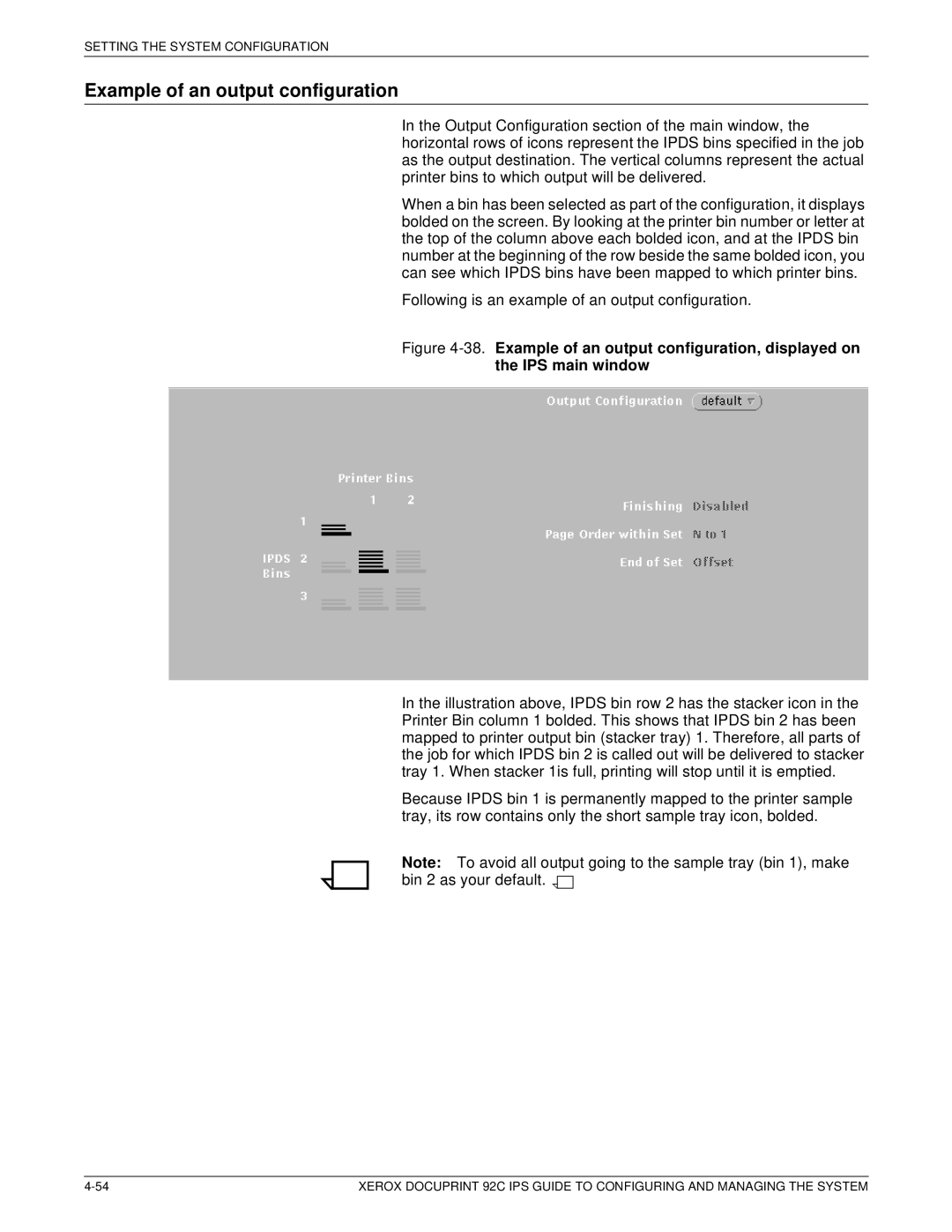
SETTING THE SYSTEM CONFIGURATION
Example of an output configuration
In the Output Configuration section of the main window, the horizontal rows of icons represent the IPDS bins specified in the job as the output destination. The vertical columns represent the actual printer bins to which output will be delivered.
When a bin has been selected as part of the configuration, it displays bolded on the screen. By looking at the printer bin number or letter at the top of the column above each bolded icon, and at the IPDS bin number at the beginning of the row beside the same bolded icon, you can see which IPDS bins have been mapped to which printer bins.
Following is an example of an output configuration.
Figure 4-38. Example of an output configuration, displayed on the IPS main window
In the illustration above, IPDS bin row 2 has the stacker icon in the Printer Bin column 1 bolded. This shows that IPDS bin 2 has been mapped to printer output bin (stacker tray) 1. Therefore, all parts of the job for which IPDS bin 2 is called out will be delivered to stacker tray 1. When stacker 1is full, printing will stop until it is emptied.
Because IPDS bin 1 is permanently mapped to the printer sample tray, its row contains only the short sample tray icon, bolded.
Note: To avoid all output going to the sample tray (bin 1), make bin 2 as your default. ![]()
![]()
XEROX DOCUPRINT 92C IPS GUIDE TO CONFIGURING AND MANAGING THE SYSTEM |
